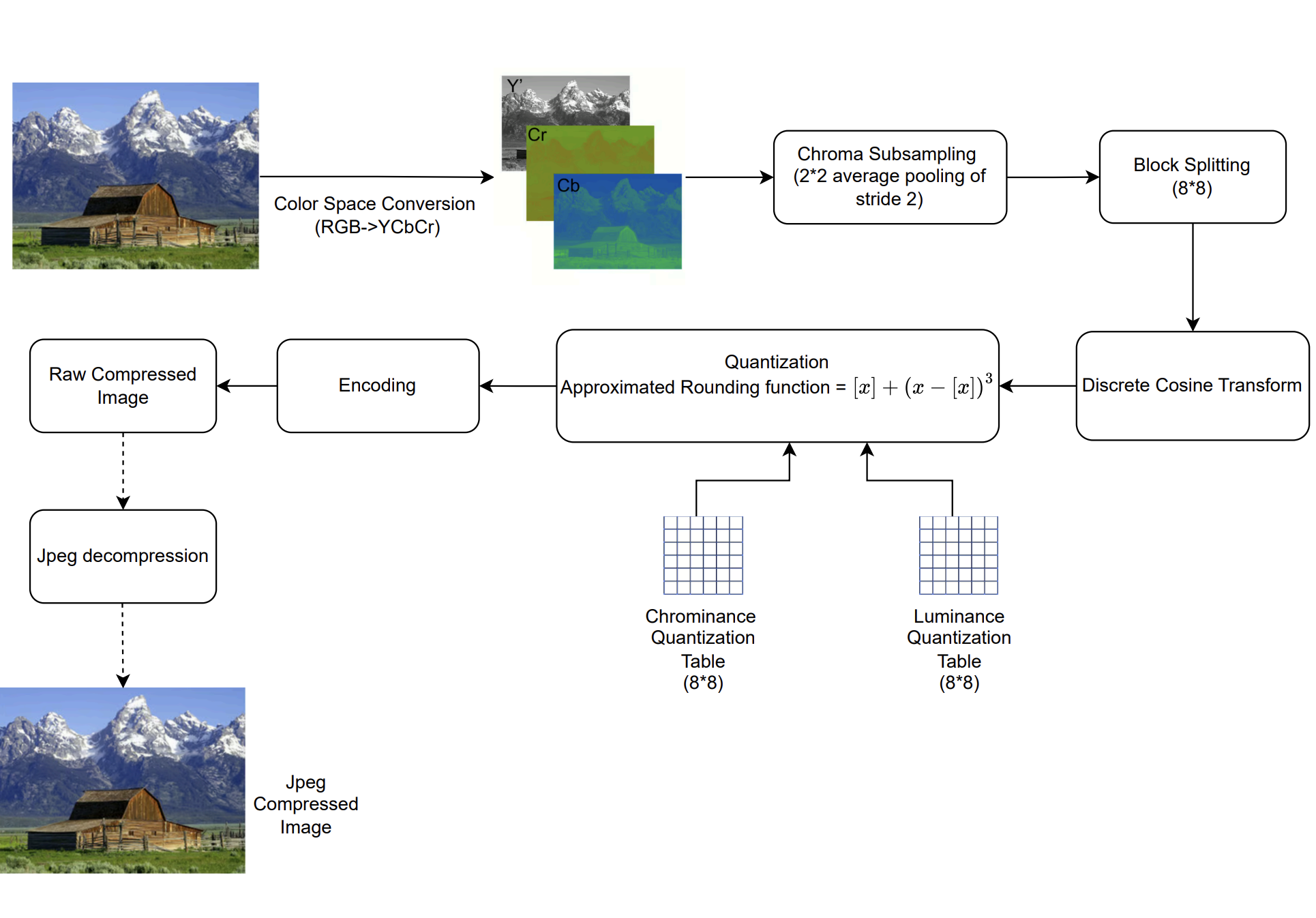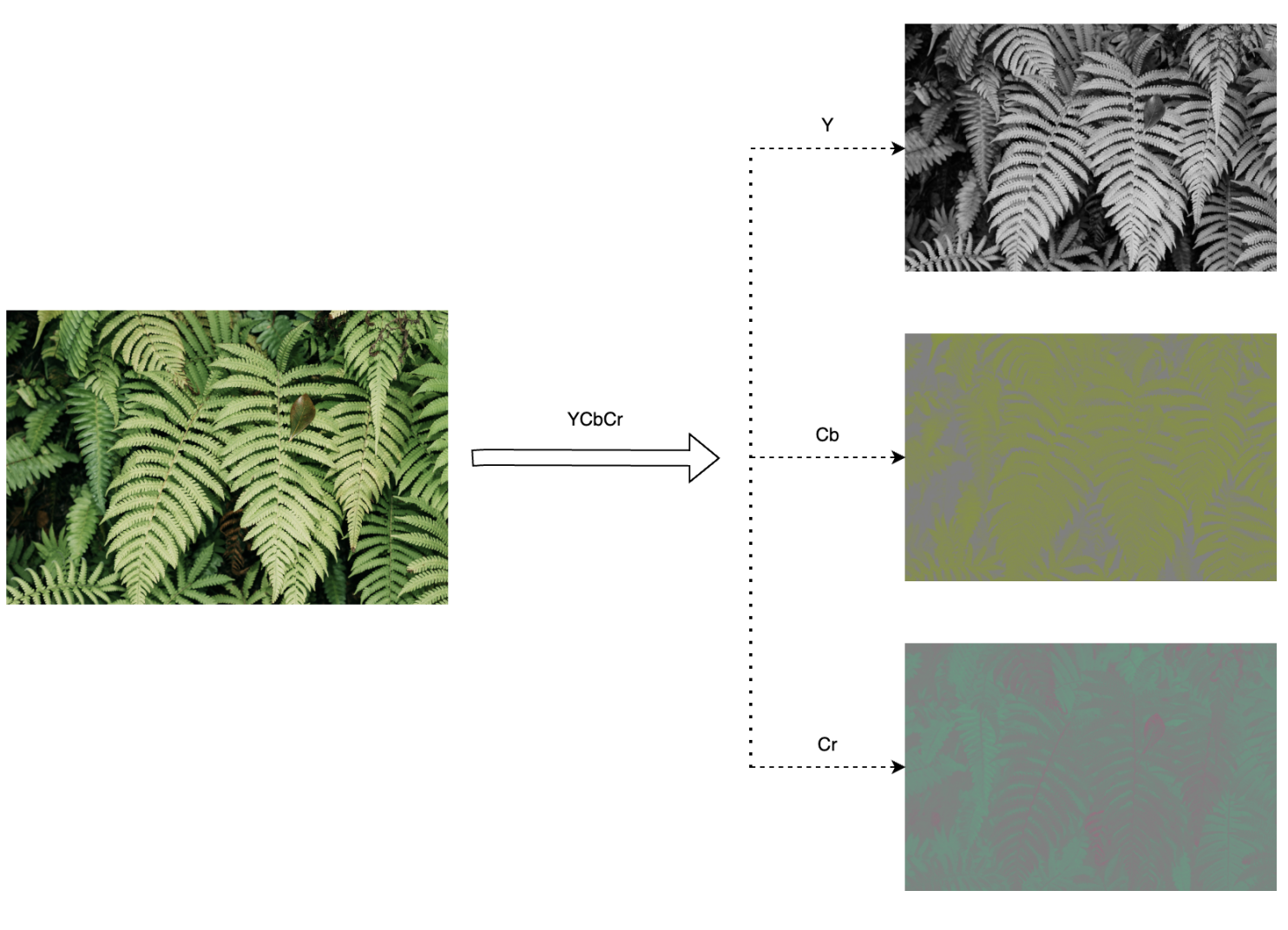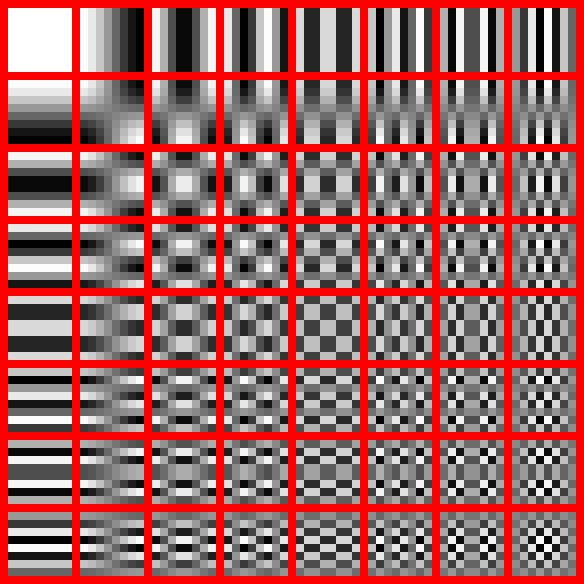
Color Space Conversion
Most images are stored in the RGB (Red, Green, and Blue) color space. For JPEG we
need to convert it into YCbCr format. In this format, luminance information is stored
as a single component (Y) and chrominance information is stored as two color-difference
components (Cb and Cr). For conversion we use the following formula:

Chroma Subsampling

Human eyes are more sensitive to brightness than color information which can also be viewed in above figure. This characteristic of the human visual
system allows us to modify some of the components without significantly impacting perceived
image quality. Y (Luminance) channel preserves the fine details of the original image, while the Cb and Cr (Chrominance) channels contain primarily color information.
JPEG downsamples the Cb and Cr channels by a factor of two in each dimension.
Block Splitting
Each channel is divided into 8×8 blocks of 64 pixels. The subsequent
steps of the compression algorithm deals with each 8 × 8 block independently.
Discrete Cosine Transformation (DCT)
First, each value must be subtracted with 128
to make the value range from −128 to +127. DCT transforms an 8 × 8 block of pixels
into linear combination of 64 patterns which are given by figure below. The DCT yields
a weight matrix indicating how much each base image contributes to the formation of
the source image.

Quantization
Human eyes are not that well equiped to view the high frequency
elements in an image. After chroma subsampling this is the step where information
is lost. The weight matrix is divided by a precalculated quantization table. Quantization matrix Q ∈ 8 × 8 is used to create Di,j = ⌊ Ci,j
/ Qi,j ⌉, ⌊.⌉ represents rounding to
the nearest integer. Within the JPEG quantization matrix, higher values are typically
concentrated in the bottom right quadrant. Mathematically, these higher Q values in
the lower-right region result in a significant number of elements in the DCT (Discrete
Cosine Transform) domain (represented by D) becoming zero. Consequently, this effectively removes high-frequency details from the image, such as sharp edges and intricate
textures.
Approximate Rounding Function
The non-differentiability of the rounding
function used in JPEG quantization impedes the application of gradient-based optimization techniques. To address this challenge,
differentiable surrogate functions are used that closely approximate the rounding behavior. Examples of suitable surrogate functions include linear, Fourier, or polynomial
functions.
Decoding
For obtaining the RGB image, all the steps are performed in reverse
order. Inverse quantization involves element-wise multiplication with the quantization
matrix. This process is lossy because original values cannot be recovered perfectly.
Inverse discrete cosine transformation reverses the DCT transformation applied during compression. Finally, we perform YCbCr to RGB conversion which is an affine
transformation involving matrix multiplication and bias addition.
References
-
JPEG-resistant Adversarial Images | Here
-
How are Images Compressed? [46MB ↘↘ 4.07MB] JPEG In Depth | Here
- JPEG Compression Explained, Baeldung
- JPEG, Wiki


 Human eyes are more sensitive to brightness than color information which can also be viewed in above figure. This characteristic of the human visual
system allows us to modify some of the components without significantly impacting perceived
image quality. Y (Luminance) channel preserves the fine details of the original image, while the Cb and Cr (Chrominance) channels contain primarily color information.
JPEG downsamples the Cb and Cr channels by a factor of two in each dimension.
Human eyes are more sensitive to brightness than color information which can also be viewed in above figure. This characteristic of the human visual
system allows us to modify some of the components without significantly impacting perceived
image quality. Y (Luminance) channel preserves the fine details of the original image, while the Cb and Cr (Chrominance) channels contain primarily color information.
JPEG downsamples the Cb and Cr channels by a factor of two in each dimension.
